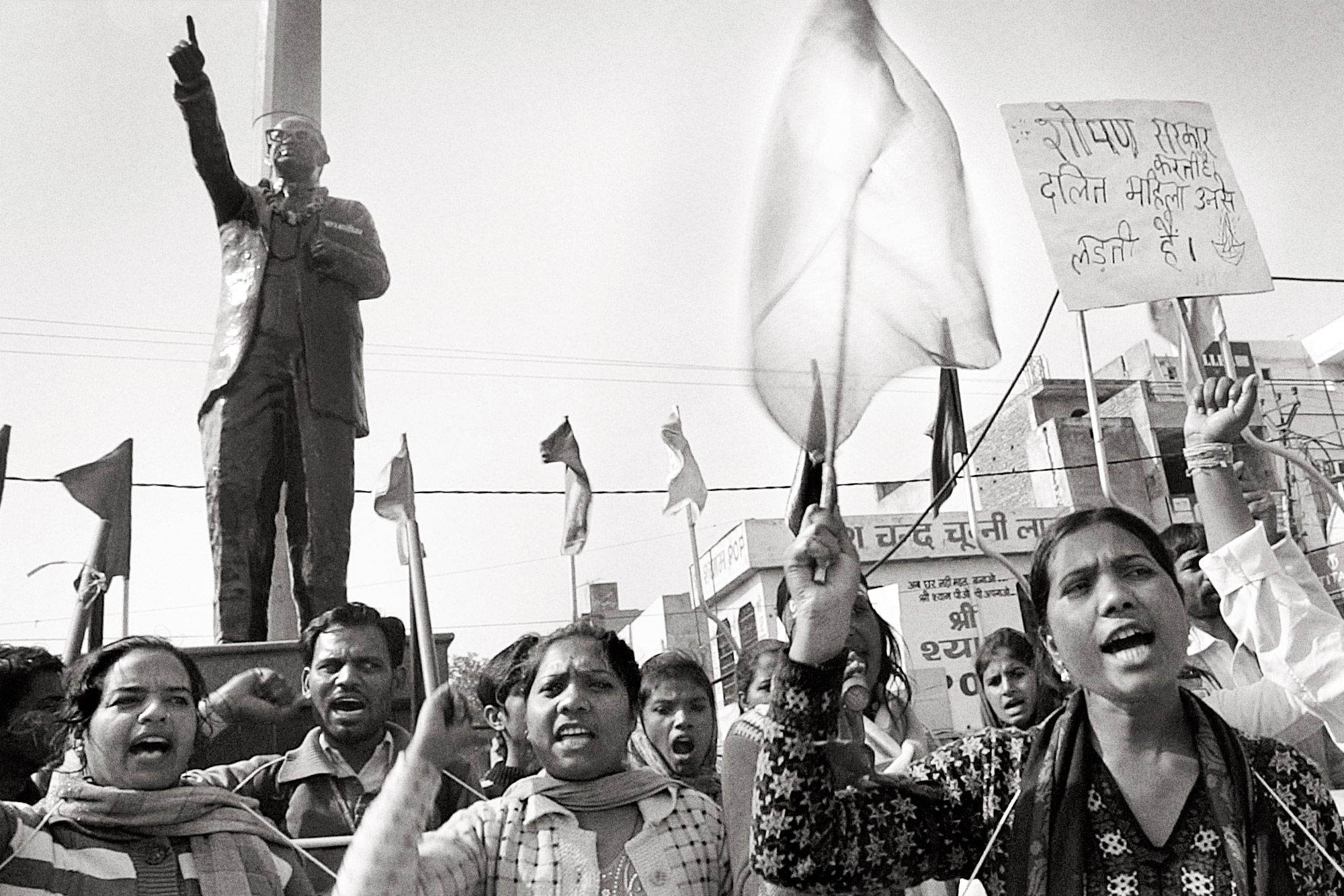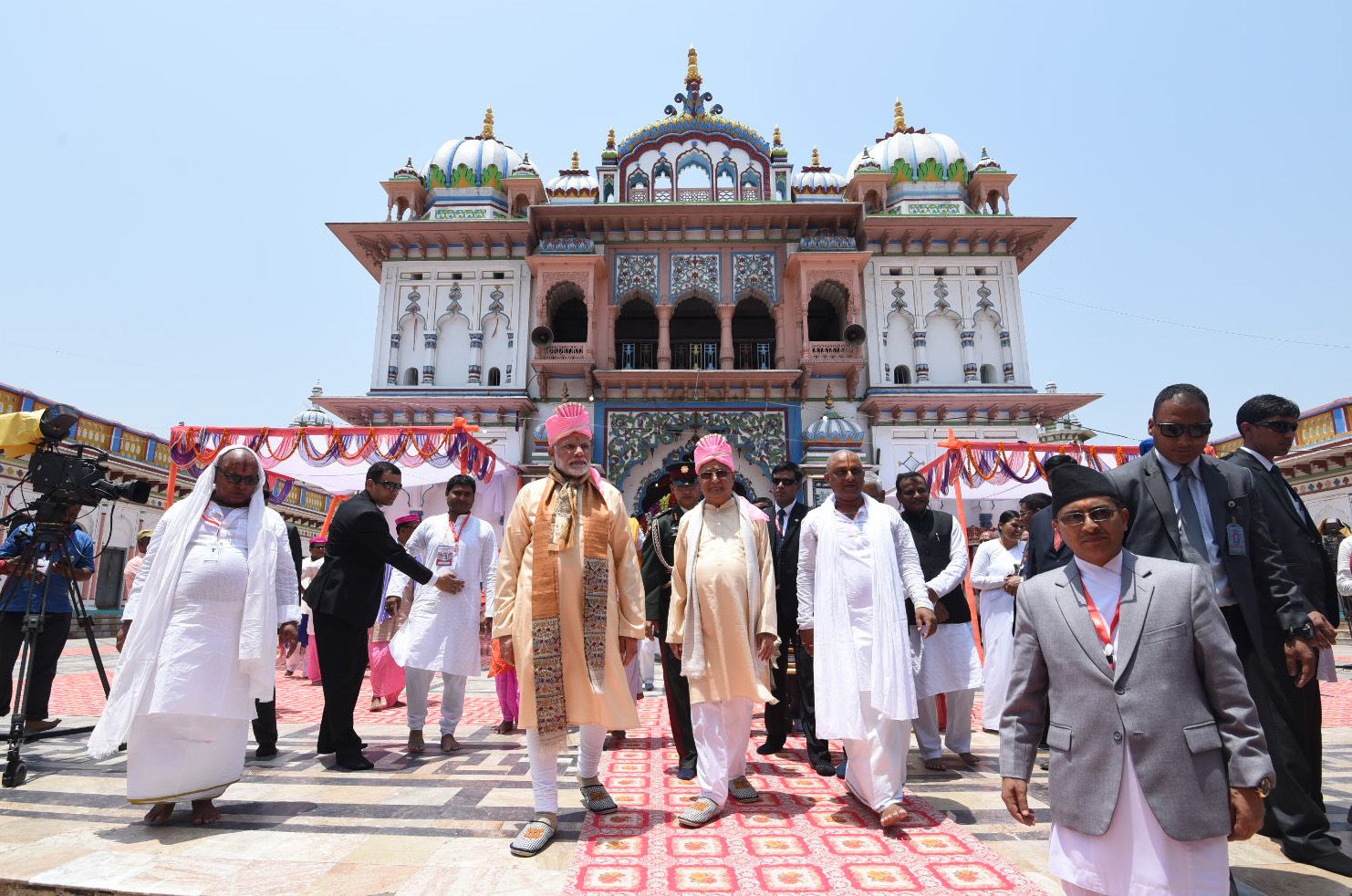In a 2014 poll, more than 94 percent of Nepalese said that religion was very important in their daily lives. As such an intensely religious society, Nepal made headlines in 2007 when it ousted its Hindu monarchy to form the new, secular nation it is today. Unsurprisingly, the movement toward secularism triggered violent protests from Hindu extremist groups, which erupted throughout the country during the final declaration of secularism in 2015. Nevertheless, many communities fought decades for democracy and secularism as equally important ideals for their new Nepal. They were acutely aware how Hindutva—an ideology that centers Hindu history, scripture, and religious community as central to one’s national identity—harms Nepali society and its inclusiveness. With more than 101 ethnic groups speaking 91 different languages, a secular identity is necessary to define an inclusive form of national fabric in a country as diverse as Nepal. Yet, Hindutva continues to remain a constant threat to this national fabric. In order to cultivate an inclusive national unity, secularism needs to be at the core of new Nepal.
The ideology of Hindutva has been present in the project of state formation in Nepal since the very beginning. The first monarch of this small Himalayan nation, Prithivi Narayan Shah (PNS), was believed to have unified all the smaller kingdoms that existed prior to the 18th century as a strategic ploy to counter the increasing power of the British in colonial India. Many are not aware how central Hindutva was to this project. PNS repeatedly mentioned in his writings how he wanted to establish Nepal as the “asal Hindustan” (the true land of the Hindus). His campaign of unification was also an attempt to establish a Hindu bulwark against Muslim hegemony in Mughal India and the rising Christian presence from the British.
The presence of Hindutva can be observed in the monarchy more recently as well. Towards the end of the 20th century, the monarchs actively used Hindutva to retain popular legitimacy and power over increasing calls to democratize. The starkest manifestation of this strategy was perhaps their deification as a direct reincarnation of the Hindu God Vishnu. Beginning in the 1960s, the monarchy actively started to establish Nepal as the last Hindu kingdom in the world, in direct opposition to secular India in the south. They began to foster cultural ties with the Hindu right, often to the dismay of incumbent governments, in India. This continued alongside the monarchy’s attempts to legitimize their rule as a divine ordinance inside the Nepali population while establishing Nepal as the last Hindu kingdom to the outside world. The monarchy even organized a world Hindu conference in the late 1980s and was named the “World Hindu Emperor'' in 2005.
The Impacts of Hindutva
Nepal is very diverse along religious lines. In the most recent census of 2011, 81 percent of the population identified themselves as Hindus, while 9 percent identified Buddhism as their primary religion. Islam was observed by 4.4 percent of the population, while 3.1 percent observed an Indigenous religion called Kirant. Whereas official estimates count 1.4 percent as Christians, many criticize this as a deliberate undercounting of Christian families.
Undercounting other religions and their merits is not unusual for Hindutva. One of the major criticisms of Hindutva is how it denigrates the contribution of other religions that also originate in South Asia, like Buddhism, Jainism, and Kirant. It also externalizes Islam and Christianity as invader religions. By propagating Islamophobia and false accusations of Christian proselytization, Hindutva deems the native followers of these minority religions as outsiders in their own homeland.
Hindutva has severely affected the preservation and celebration of other major religions practiced in Nepal. Until 2007, when Nepal was finally declared a secular state, followers of non-Hindu religions were not even recognized with national holidays for their major festivals. Nepali rulers have followed a tradition of hierarchizing Nepali society with Hinduism clearly above all other religions since the founding of modern Nepal in the 18th century. Local elites from various Indigenous Nationalities (called Janajatis in Nepal) were incentivized, with the promise of political relevance, to convert to Hinduism. Reportedly, many Thakali and Gurung lineages, two very prominent Janajati communities in Nepal, switched their primary allegiance from Tibetan Buddhism to Hinduism due to such incentives.
These rulers foregrounded these incentives with an active ploy to eradicate Indigenous languages and make Nepali the dominant lingua franca. In a country where only 44 percent speak Nepali as their first language, even today, state-sanctioned eradication of Indigenous languages gradually eroded the unique culture and religious practices of these communities. One of the starkest examples can be observed in Magars, one of the biggest Janajati communities in Nepal. While Magars represent 7.1 percent of the population, their Indigenous language is spoken only by a meager 3 percent. Losing one’s native language leads to a gradual decay of the collective memory of one’s unique history and religious culture. Throughout the last three centuries, many Janajati communities lost their language, culture, and religion to a state increasingly hostile to any deviance from the specific blend of Nepali-speaking, upper-caste Hindu traditions.
The harms of Hindutva have not been limited to the non-Hindu population of Nepal. One of the most notorious ways in which it subjugates Hindu populations is via the caste system. The Hindu caste system has been used as a central tool of division and oppression in many Hindu kingdoms in South Asia for the last 3500 years. Nepal has been no exception. The most detrimental effects of the caste system have been experienced by Dalits—communities denigrated to the bottom of the caste hierarchy. The ancient Hindu tradition of caste-based marginalization has continued under the direct supervision of every ruler since the founding of Nepal. Dalits have been denied both the necessary land to survive and their deserved social respect in Nepali society since its inception. This continues to this day as Dalit teenagers are lynched for falling in love with those from the upper-caste, and Dalit individuals are denied access to public spaces and commercial holdings because of their identity.

Most recently, Rupa Sunar made headlines in Nepal when she was denied a rental room in the capital city of Kathmandu because of her caste. Notably, in this incident, the family denying her a room belonged to the Newar community, another major Janajati community in Nepal. Janajatis, which comprise more than 35 percent of the population, have been active participants in discriminating against Dalits since the reign of Prithivi Narayan Shah (PNS) himself. In 1854, Junga Bahadur Rana, the despot in power then, purposefully included Janajatis into the Hindu caste system above Dalit communities. Even though a majority of them were neither Hindu nor had a pre-existing caste system, the state-sanctioned caste hierarchy encouraged discrimination against Dalits for centuries while mandating reverence for those in the upper caste.
The fight against the caste system is inextricably linked to the fight for secularism, both for Janajatis and Dalits. The upper caste Hindu kings of yesterday have become the upper caste Hindu politicians and judges of today. Despite political quotas to ensure proportionate representation since 2007, upper caste men continue to dominate the upper echelons of all the major political institutions. Despite just making up 15 percent of the population, upper caste men make up 85 percent of judges in the country. The socio-political dominance of these men is intrinsically tied to their status in the Hindu caste system. Separating religion from the state is a key step in creating a representative political system and building a secular Nepal.
Gradual Secularization
The breadth of ethnic and religious diversity in Nepal makes secularism a necessity. The declaration of Nepal as a secular state in 2007 affirmed various non-Hindu Nepalese’s claim to equal citizenship. They could now be Christian or Muslim and still be as Nepali as anyone else. This was most explicitly not the case when Nepal was celebrated as the only Hindu kingdom in the world until 2007.
Janajatis and minority religious groups actively fought for equal citizenship to create the Nepal they live in today. Beginning in the 1990s, calls to declare Nepal a secular state began to grow from Janajati leaders. A 10,000-strong silent demonstration was held in support of secularism and minority rights in 1990. Reportedly, more than 100,000 people reclaimed the streets to march against the Hindu monarchy and for a secular state in 1994. These forces were critical in establishing the democratic infrastructure and collective imagination necessary to later oust the Hindu monarchy. The then-insurgent Maoists, with the support of various Janajati communities, also demanded secularism in their 40-point demand to the government before starting the decade-long civil war in 1996. This civil war ended with the ousting of the Hindu monarchy in 2007 and the declaration of Nepal as a secular state.

However, Hindutva continues to be a key threat to the integrity of Nepali society today. The national rise of the Hindu right in India in 2014 followed the rise of its Nepali counterpart, the Rastriya Prajatantra Party (RPP), in 2013. The RPP, an unabashedly pro-monarchy party infamous for using Hindutva politics, became the fourth biggest party in the new Constituent Assembly in 2013 from a much smaller force in 2008.
The influence of Hindutva in the making of Nepal’s final constitution in 2015 has been undeniable. Even de jure secularism in Nepal today is questionable. Many activists and minority communities objected to the wording of the constitution since secularism has been defined as the state protecting Sanatan religions, or religions practiced from ancient times. The term Sanatan is especially troubling as adherents of Hinduism often define themselves as followers of Sanatan dharma (or religion). While most would consider Buddhism and Kirant as being one of the Sanatan religions, there really is no definite list, and this vagueness is troubling for many. What is not vague for most scholars and activists is that Islam and Christianity would not be considered as Sanatan religions if their status came under any sustained questioning. This is just one example of the tenuous nature of Nepal’s new secularism.
Even without the election of an outright Hindu government, the incumbent governments do not appear rather favorable to the secular spirit of Nepal. Many fear that Khadga Prasad Oli, the recently-ousted Prime Minister of Nepal, symbolized the increasing prominence of Hindutva politics in Nepal. He caused a stir all over South Asia when, in 2020, he claimed that Lord Ram was born in Nepal, not in India. Many announced their displeasure over what they saw was an embattled leader using Lord Ram, an important figure of Hindu worship, for political ends. But this is not unusual for Oli. He famously expressed opposition to secularism before the promulgation of the new constitution in 2015. He is also routinely criticized for making official state visits to Hindu temples, often just when political crises are around the corner. Even though he is no longer the prime minister now that the Supreme Court of Nepal has rejected his unconstitutional stint, he still continues to lead the biggest political party in the country.

Another facet of Nepali society that is clearly not secular today is the criminalization of cow slaughter. It is unclear why a secular nation would criminalize the slaughter of a particular animal based on the religious grounds of one community. This criminalization is often used to prosecute Dalits and Janajatis all over Nepal. Between 2011 and 2017, there have been 727 court cases of cow-slaughter in Nepal. While a majority of the accused are either Dalits or Janajatis (51 percent and 39 percent in the supreme court, respectively), more than 80 percent of the judges presiding over these cases come from the Hindu upper caste. Eating cow meat has historically been an integral part of many Janajati communities like Dolpo, Limbu, and Tamang. It is a result of their unique history of varied culture, specific geographical challenges, and ritual traditions. Criminalizing their indigeneity is one way in which the upper caste community continues to impose its religious values over everyone else. A majority of those convicted from these communities face 12 years of jail time for the crime of consuming something that they already owned.
Changing religions does not seem to end their woes either. A pathway many Dalits are increasingly choosing to escape social and religious persecution is converting to Christianity. More than 65 percent of Christians in Nepal today are Dalits, and the World Christian Database claims that Nepal has the world’s fastest-growing Christian community. Instead of rectifying the underlying social cause of such conversion, people who convert are used as battering rams for many to exert their Hindutva. The constitution today criminalizes proselytization, and converts to Christianity often face significant social persecution.
Many communities have fought long and hard for a secular Nepal. However, not everyone is sold on the notion just yet. In a series of opinion polls conducted in 2010 and 2011, around 55 percent of Nepalese said that they supported a potential redeclaration of Nepal as a Hindu state. For many pro-Hindu groups, the demand for the previous King to return is intimately tied with the redeclaration of Hindu nationhood. Yet, Nepal continues to strive as a secular democracy, in an incomplete and imperfect manner.
Hinduism is undoubtedly a sacred religion for many in Nepal. It has a reverent history of providing solace and meaning to millions of lives in Nepal for thousands of years. It continues to have its vibrant presence in Nepali society today. However, rulers and despots, throughout Nepal’s history, have used Hindutva to further their political ends. This has resulted in direct harms to various Janajati cultures and religions with prestigious histories of their own, while enshrining state-sponsored oppression to the country’s Dalit communities. Many underestimate how effective Hindutva politics can be in a highly religious nation like Nepal. As Nepal strives to solidify its newfound democracy, it must reckon with its historical struggle between Hindutva and secularism.
Cover picture: Victory rally at the 1990 Nepalese revolution against the Hindu Monarchy, by Min Ratna Bajracharya





